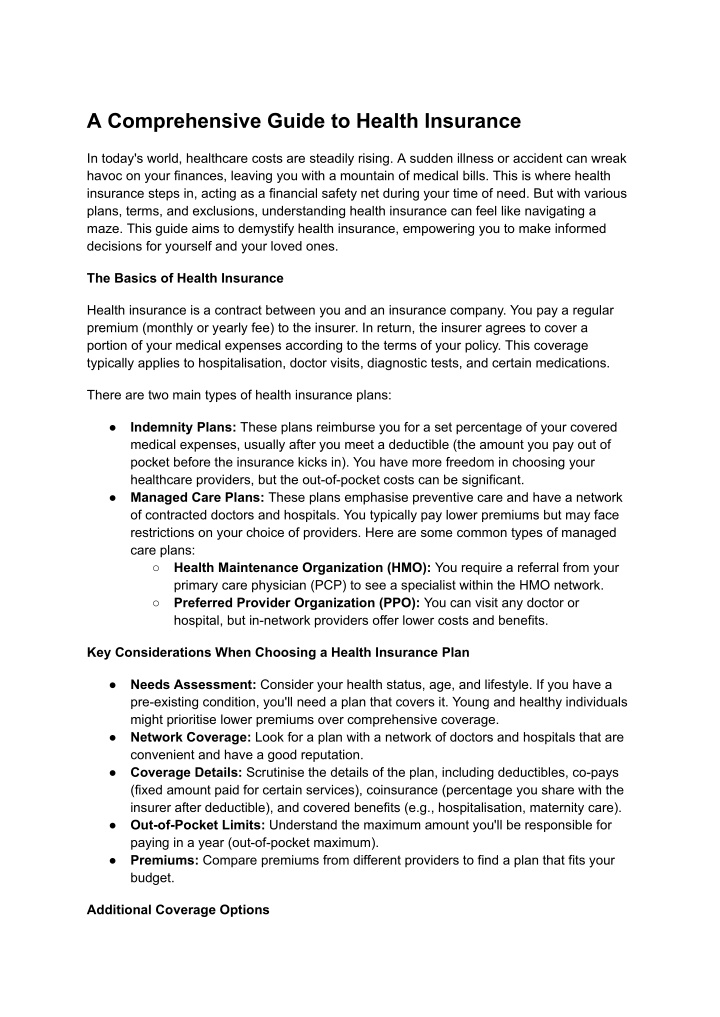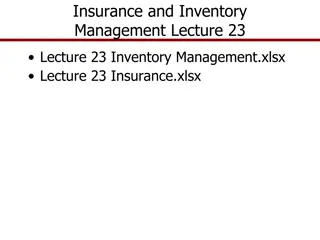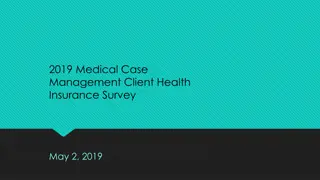
health insurance
health insurance policyn
Download Presentation

Please find below an Image/Link to download the presentation.
The content on the website is provided AS IS for your information and personal use only. It may not be sold, licensed, or shared on other websites without obtaining consent from the author. If you encounter any issues during the download, it is possible that the publisher has removed the file from their server.
You are allowed to download the files provided on this website for personal or commercial use, subject to the condition that they are used lawfully. All files are the property of their respective owners.
The content on the website is provided AS IS for your information and personal use only. It may not be sold, licensed, or shared on other websites without obtaining consent from the author.
E N D
Presentation Transcript
A Comprehensive Guide to Health Insurance In today's world, healthcare costs are steadily rising. A sudden illness or accident can wreak havoc on your finances, leaving you with a mountain of medical bills. This is where health insurance steps in, acting as a financial safety net during your time of need. But with various plans, terms, and exclusions, understanding health insurance can feel like navigating a maze. This guide aims to demystify health insurance, empowering you to make informed decisions for yourself and your loved ones. The Basics of Health Insurance Health insurance is a contract between you and an insurance company. You pay a regular premium (monthly or yearly fee) to the insurer. In return, the insurer agrees to cover a portion of your medical expenses according to the terms of your policy. This coverage typically applies to hospitalisation, doctor visits, diagnostic tests, and certain medications. There are two main types of health insurance plans: Indemnity Plans: These plans reimburse you for a set percentage of your covered medical expenses, usually after you meet a deductible (the amount you pay out of pocket before the insurance kicks in). You have more freedom in choosing your healthcare providers, but the out-of-pocket costs can be significant. Managed Care Plans: These plans emphasise preventive care and have a network of contracted doctors and hospitals. You typically pay lower premiums but may face restrictions on your choice of providers. Here are some common types of managed care plans: Health Maintenance Organization (HMO): You require a referral from your primary care physician (PCP) to see a specialist within the HMO network. Preferred Provider Organization (PPO): You can visit any doctor or hospital, but in-network providers offer lower costs and benefits. Key Considerations When Choosing a Health Insurance Plan Needs Assessment: Consider your health status, age, and lifestyle. If you have a pre-existing condition, you'll need a plan that covers it. Young and healthy individuals might prioritise lower premiums over comprehensive coverage. Network Coverage: Look for a plan with a network of doctors and hospitals that are convenient and have a good reputation. Coverage Details: Scrutinise the details of the plan, including deductibles, co-pays (fixed amount paid for certain services), coinsurance (percentage you share with the insurer after deductible), and covered benefits (e.g., hospitalisation, maternity care). Out-of-Pocket Limits: Understand the maximum amount you'll be responsible for paying in a year (out-of-pocket maximum). Premiums: Compare premiums from different providers to find a plan that fits your budget. Additional Coverage Options
Beyond basic health plans, consider these additional options: Dental and Vision Insurance: These separate plans cover dental and vision care costs. Critical Illness Insurance: Provides a lump sum payout if diagnosed with a critical illness like cancer or heart disease. Accident and Health Insurance: Offers financial protection in case of accidental injuries. Understanding Common Health Insurance Terms Deductible: The amount you pay out of pocket before the insurance starts covering your expenses. Co-pay: A fixed amount you pay for a doctor's visit or prescription medication. Coinsurance: The percentage of covered medical expenses you share with the insurance company after you meet the deductible. Out-of-Pocket Maximum: The maximum amount you'll pay for covered services in a year after deductibles and coinsurance. Pre-existing Condition: A medical condition you had before enrolling in a health insurance plan. Coverage for pre-existing conditions may vary depending on the plan and regulations in your region. Maximising Your Health Insurance Benefits Preventive Care: Regularly scheduled checkups and screenings. Preventive care is typically covered at lower costs or even free under most plans. Network Utilisation: Try to stay within your plan's network to receive the maximum benefits and avoid higher out-of-network costs. Claims Process: Understand the claims filing process of your insurance company. Keep detailed records of medical bills and submit claims promptly. Review and Update: Review your health insurance plan regularly, especially during significant life changes like marriage, childbirth, or job loss. You may need to adjust your coverage accordingly. Health Insurance and Your Employer Many employers offer group health insurance plans to their employees. These plans can be a cost-effective way to obtain health coverage, as employers may contribute to the premium costs. Carefully compare your employer-sponsored plan with other options available in the marketplace.






















